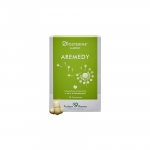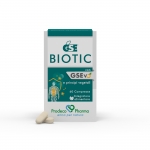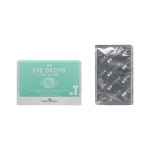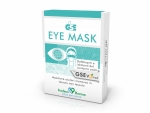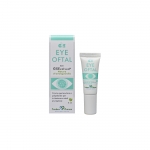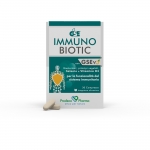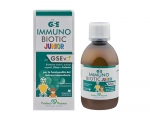Ours is a holistic approach that does not hinder the physiological processes of the body. It's an approach that encourages the restoration of balance, by combatting the causes of symptoms as efficiently as possible and ensuring fast relief.
Symptoms and relief
SELECT YOUR NEED

Eyes
EYE HEALTH
THE EYE IS A SYSTEM IN DYNAMIC EQUILIBRIUM, PROTECTED BY A VERY IMPORTANT BARRIER: THE TEAR FILM
The tear film is a thin , fluid layer that covers the outer surface of the eyeball and plays a vital role in eye function. The stability of the tear film is vital for eye health.
It performs an OPTICAL, TROPHIC, PROTECTIVE, LUBRICATING AND CLEANING function.
THE STRUCTURE OF THE TEAR FILM IS QUITE COMPLEX AND CONSISTS OF 3 LAYERS:
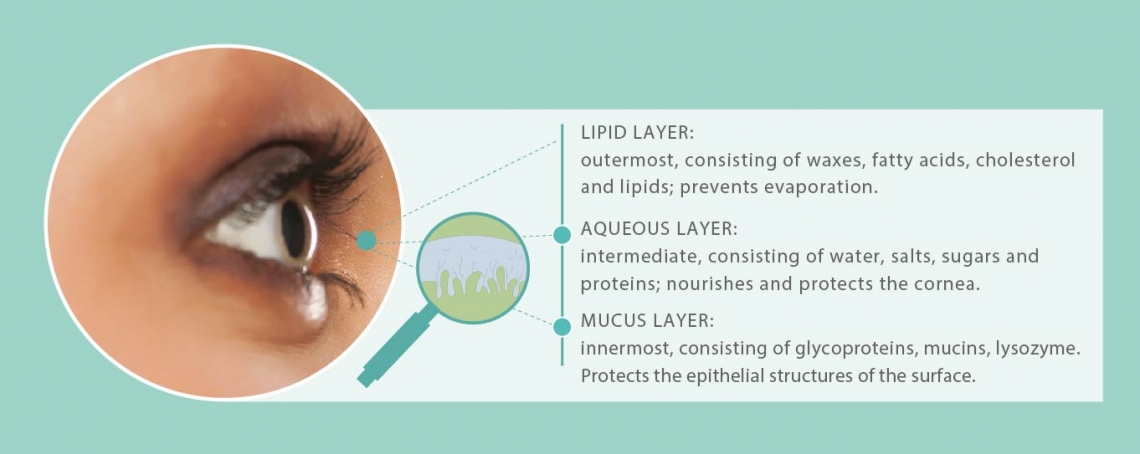
THE FACTORS AND SYMPTOMS THAT CAUSE TEAR FILM IMBALANCE ARE ESSENTIALLY:
ENVIRONMENTAL AND PHYSIOLOGICAL
- dust, moisture, pollution (allergens)
- environments with artificial light
- particular hormonal conditions (menopause)
- taking particular medications
- (antihistamines, oral contraceptives)
- prolonged use of contact lenses
- allergies, thyroid changes, etc.
SYMPTOMS
- burning sensation
- irritation
- light sensitivity
- abundant tear production
- itching
- contact lens intolerance
- redness of the conjunctiva
- visual fatigue

IMPAIRED TEAR FUNCTION CAN PREDISPOSE YOU TO VARIOUS DISORDERS, SUCH AS:
EYE PATHOLOGIES FROM CONTACT LENSES
(KERATITIS, CORNEAL ABRASION, DRY EYE, IRITIS)
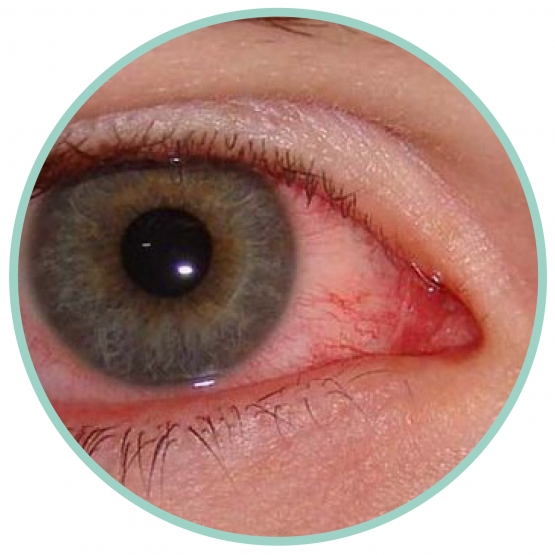
CONJUNCTIVITIS
(BACTERIAL, FUNGAL, VIRAL, FROM CHEMICAL/PHYSICAL AGENTS, ALLERGIC)
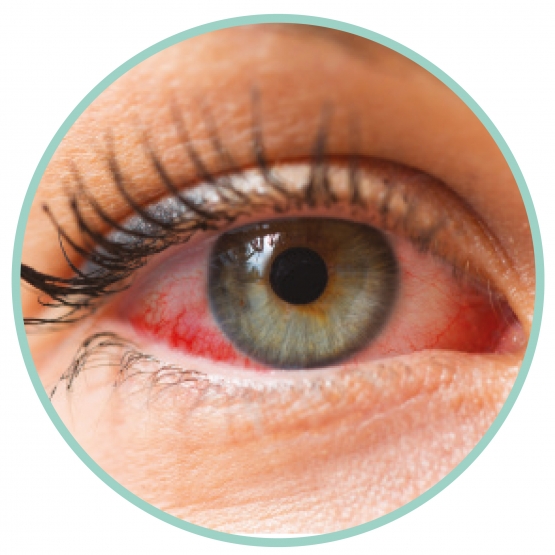
DISORDERS OF THE EYELIDS AND THE AREA AROUND THE EYES
(CHALAZION, STYE, BLEPHARITIS, DACRYOCYSTITIS, EYELID DERMATITIS)
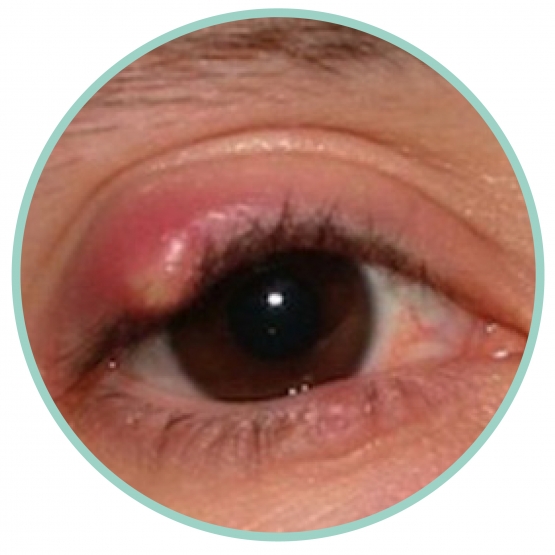
The conjunctiva is a thin transparent mucosa that lines the anterior surface of the eyeball and folds up to also cover the inner part of the eyelids, with the function of protecting the eye. Since this anatomical area is constantly in contact with the outside world, it is clear that it is particularly vulnerable to aggression of various origins (bacterial, viral, atmospheric, from foreign bodies, etc.), and sometimes its natural defenses are not sufficient.
This is why conjunctivitis can occur, one of the most well known and widespread eye diseases. The inflammation affecting the conjunctiva causes the most obvious sign of the condition: diffuse redness of the eye due to dilation of conjunctival blood vessels (hyperemia), which in severe cases can lead to blood loss (subconjunctival hemorrhage).
It is commonly associated with edema, abundant tear production, serous or mucus-like discharge, light sensitivity and itching; the symptoms are not painful as such, but rather consist of discomfort and the sensation of a foreign body. The etiology of different forms of conjunctivitis can be determined according to the extent of hyperemia and the nature of the symptoms. It can be triggered by various causes and present with different symptoms: due to microbial agents (bacteria, viruses and fungi), physical and chemical agents (smoke, wind, vapors or chemicals, environmental pollutants, exposure to very intense natural or artificial light), the presence of a foreign body in the eye (contact lenses), or as a result of an allergic reaction to dust, pollen, animal hair, etc. (see Allergic conjunctivitis). Systemic bacterial and viral infections (from simple colds to exanthematous diseases such as measles) can also cause conjunctivitis.
Conjunctivitis of bacterial origin
Staphylococcus aureus, Streptococcus pneumoniae and Haemophylus influenzae are common and frequent causes of bacterial conjunctivitis. This affects both eyes and usually presents with abundant yellow or greenish purulent discharge, most evident in the morning ("sticky eyelids" upon awakening), accompanied by ocular irritation and a sensation of "sand in the eyes," intense redness and modest swelling; itching and abundant tear production are less frequent.
Gonococcal conjunctivitis is particularly serious, contracted as a result of direct sexual contact, which results in significant eyelid swelling and profuse purulent discharge. It usually affects one eye only.
Bacterial conjunctivitis also includes conjunctivitis caused by Chlamydia trachomatis: typical in newborns after they pass through the infected birth canal, and in adults due to exposure to infected genital secretions, it has an acute onset and then tends to become chronic. In addition to redness, it manifests with a mucopurulent discharge and formation of protruding lymphatic follicles on the conjunctiva, which may sometimes cause opacity.
Conjunctivitis of viral origin
Conjunctivitis of viral origin, typically caused by Adenoviruses, is usually highly contagious, acute in onset, and manifests with the typical symptoms of conjunctival vasodilatation, mostly non-purulent aqueous discharge, irritation and profuse tear production; light intolerance and a burning sensation may occur, while eyelid swelling is minimal and there is no itching. It usually occurs in only one eye, but often develops and becomes bilateral. Viruses often attack not only the conjunctival epithelium but also the corneal epithelium, causing lesions and keratitis of varying degrees. Similarly, Herpes simplex and Herpes zoster can also be causative agents.
Conjunctivitis of fungal origin
Conjunctivitis caused by fungi is rarer and often remains completely asymptomatic, without the typical signs of inflammation. Several different species are responsible, which can cause degeneration of the conjunctival epithelial cells, with possible isolated lesions of both the conjunctiva and the eyeball. In addition to conjunctivitis, fungal infection can lead to granuloma formation.
Conjunctivitis of irritative origin
Inflammation of the conjunctiva brought on by irritants of various chemical or physical origins, such as smoke, air pollutants, detergents, UV radiation, heat, etc., presents with varying intensity and symptoms depending on the agent responsible. It manifests with more or less intense conjunctival vasodilation, secretion, which may be mucus-like, watery or entirely absent, and, depending on each case, itching, irritation, abundant tear production, dryness, photophobia, a burning sensation and the sensation of the presence of a foreign body.
Finally, giant papillary conjunctivitis is caused by a foreign body in the eye, usually affects both eyes and is typical of contact lens wearers, causing intolerance to contact lenses. It results in itching, heavy purulent discharge and abundant tear production.
Grapefruit seed extract (GSE)
Grapefruit Seed Extract (GSE) works as an extraordinary "selective cleanser," acting without affecting the microbial flora of the mucosas or harming ocular function. GSE is an ideal remedy for ocular and eyelid disorders of a viral and bacterial nature.

Chamomile
Chamomile has been used for centuries as an anti-inflammatory and antioxidant in the treatment of eye infections and eye disorders, including clogged tear ducts and conjunctivitis. Eye drops containing Chamomile extracts have a proven protective and anti-inflammatory effect on human corneal epithelial cells, and can protect them from UVB-induced cell death, improve wound healing, and, finally, exert a potent antioxidant effect.
Marigold
Marigold has a rich phytocomplex of triterpene derivatives, flavonoids (quercitin, rutin, astragalin), mucilages and carotenoids, thanks to which it has exceptional anti-inflammatory and decongestant action, providing relief from burning and eye irritation.
Hyaluronic acid
Hyaluronic acid is a glycosaminoglycan that plays a crucial role in the physiological processes of tissue repair and regeneration. In vitro studies have shown that Hyaluronic acid can stimulate growth factors and cytokines necessary for the healing process through specific interaction with receptors present in fibroblasts and endothelial cells, while reducing bacterial contamination and the risk of infection. It also has muco-adhesive and barrier-forming properties.
Polysaccharides from tara and red seaweed
These polysaccharides are able to form a strong, flexible and non-occlusive film that mimics the barrier functions of the skin. In this way, they protect against pollutants (-47%), irritants (-22%) and allergens (-62%) while maintaining the skin's natural properties. The protective effect of this ingredient was studied in a reconstructed 3D model of the inflamed epidermis with altered barrier function. The treatment has a proven ability to reduce the adhesion of pollutants and allergens, and also that of bacteria.

Carnosine
Carnosine is a dipeptide consisting of alpha-alanine and L-histidine. Thanks to its antioxidant action, it is particularly indicated for protecting against oxidative damage induced by sunlight (UVA, UVB, visible light and infrared rays) and aging, increasing skin elasticity and firmness.
Carnosine protects against the effects associated with exposure to UVB rays, which, just like UVA rays, cause oxidative damage to DNA, collagen degradation and hypopigmentation, especially in the epidermis. It also protects cells from the consequences of exposure to visible light, particularly blue light (400-500 nm), which is the only portion of the visible spectrum that can induce oxidative damage and hyperpigmentation.
Plants waxes from jojoba, sunflower and mimosa
Thanks to their lipophilic and non-occlusive nature, plant-based waxes effectively contribute to decreasing transepidermal water loss, thus exerting a barrier and soothing effect on the skin. The synergy between the oils and waxes in the emulsion has a protective effect, promoting the optimal level of skin hydration and thus restoring the hydrolipidic skin film to its healthy state.
Witch hazel water
Witch hazel is a well-known medicinal plant with soothing and refreshing properties. It has been used in the past to treat eye irritation due to long exposure to light. Thanks to the presence of tannins in the leaves and bark, it is used in herbal medicine for the preparation of fluid extracts and ointments with decongestant and astringent properties.
Glyceryl caprylate
Glyceryl caprylate is the ester of caprylic acid and glycerin and has a moisturizing and barrier effect. It is also used as a preservation booster as it can inhibit the growth of some bacterial species, such as S. aureus. In addition, it can stabilize emulsions and improve the feel of the skin. It reduces whiteness effect and oiliness, increasing silkiness and giving a velvety after-feel.
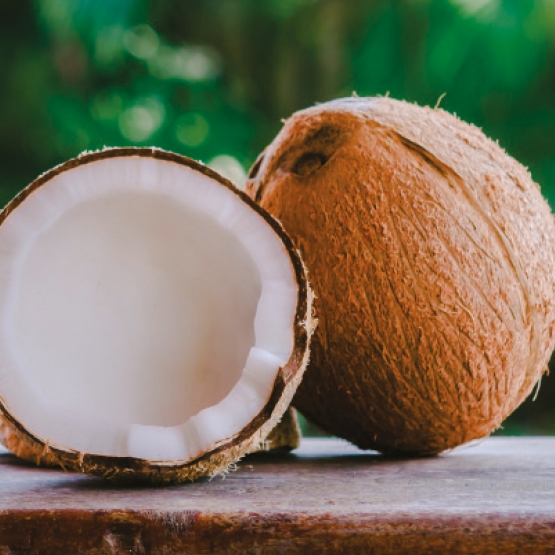
Marshmallow
Marshmallow is a medicinal plant that is particularly popular for treating the irritation of the ocular mucosa. Its roots have a high percentage of mucilage, which tends to form a thin protective and moisturizing layer over the skin. As a result, it is excellent for brightening and soothing reddened and dry eyes and eyelids.
Elderberry
Elderberry flowers are highly prized for their anti-inflammatory action, thanks to the flavonoids they contain (canferol, astragalin, rutin, quercitin, isoquercitin, hyperoside), which can modulate cytokine secretion and reduce the activity of proinflammatory interleukins. In addition, it also has a soothing effect thanks to mucilage and an antioxidant action that protects the skin from stress induced by UV light, pollutants and fatigue, which ensures the reduction of dark circles and bags under the eyes.
Green algae
Green Algae extract has a decongestant and reactivating effect on microcirculation, reducing the presence of periocular swelling. It has also been seen to increase the expression of collagen 1 and collagen 3, giving tissue greater elasticity.

Eyebright
Eyebright is a medicinal plant with prominent and widely-recognized traditional use in the treatment of ocular disorders, including ocular allergies. The most significant constituents of the phytocomplex are the iridoid glycosides (aucubin in particular), which have an excellent soothing action due to their ability to decrease the production of cytokines (such as IL-1 beta, IL-6, TNF-alpha) at the corneal cell level.

